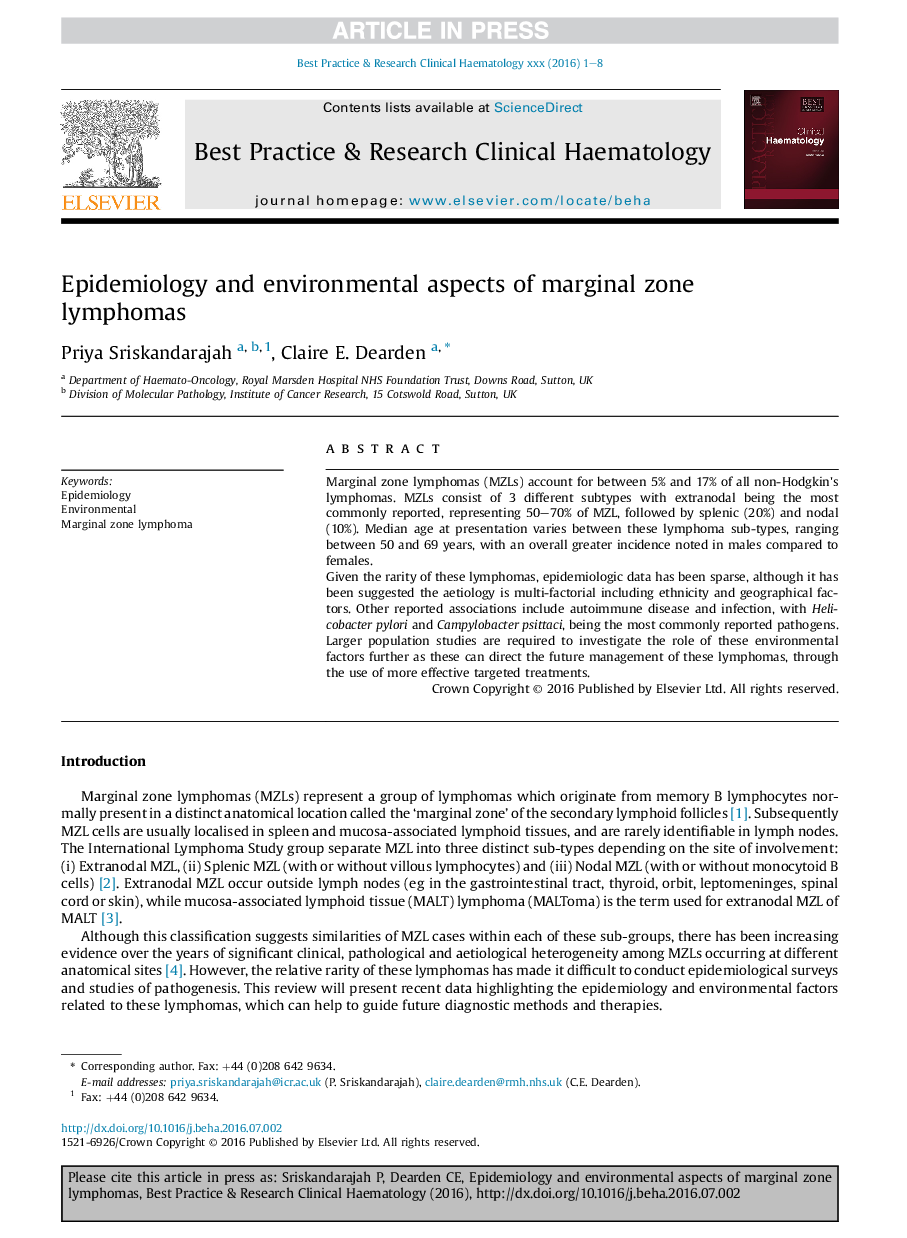| Article ID | Journal | Published Year | Pages | File Type |
|---|---|---|---|---|
| 8429212 | Best Practice & Research Clinical Haematology | 2017 | 8 Pages |
Abstract
Given the rarity of these lymphomas, epidemiologic data has been sparse, although it has been suggested the aetiology is multi-factorial including ethnicity and geographical factors. Other reported associations include autoimmune disease and infection, with Helicobacter pylori and Campylobacter psittaci, being the most commonly reported pathogens. Larger population studies are required to investigate the role of these environmental factors further as these can direct the future management of these lymphomas, through the use of more effective targeted treatments.
Related Topics
Life Sciences
Biochemistry, Genetics and Molecular Biology
Cancer Research
Authors
Priya Sriskandarajah, Claire E. Dearden,
